
Pterodactylus is an extinct genus of pterosaurs, whose members are commonly known as pterodactyls. It is thought to contain only a single species, Pterodactylus antiquus, which was the first pterosaur to be named and identified as a flying reptile.

The common green magpie is a member of the crow family, roughly about the size of the Eurasian jay or slightly smaller. In the wild specimens are usually a bright green colour, slightly lighter on the underside and has a thick black stripe from the bill to the nape. Compared to the other members of its genus, the white-tipped tail is quite long. This all contrasts vividly with the red fleshy eye rims, bill and legs. The wings are reddish maroon.

Philipp Christoph Zeller was a German entomologist.
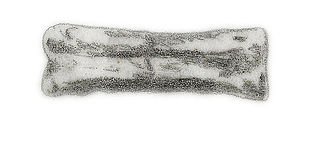
Teinurosaurus is a genus of carnivorous theropod dinosaur. Teinurosaurus lived during the Late Jurassic in what is now Portugal. The type species is Teinurosaurus sauvagei. It's been estimated to be 11.4 m in length and 3.6 tonnes in weight.
Zanclodon is an extinct genus of archosauriform found in Middle Triassic deposits in southern Germany.

Efraasia is a genus of basal sauropodomorph dinosaur. It was a herbivore which lived during the middle Norian stage of the Late Triassic, around 210 million years ago, in what is now Germany. It was named in 1973 after Eberhard Fraas, who during the early twentieth century collected what were the original type specimens.

Termatosaurus is a genus of archosaur known from several specimens spanning two species. Its remains come from the Upper Triassic and was once thought to have survived until the Early Jurassic, but the Jurassic remains were redescribed as plesiosaur remains. It has only been found in France, England, Germany and Switzerland. and two species are known of this animal: the type species, Termatosaurus albertii, named by Meyer and T. Plieninger in 1844; and T. crocodilinus, by Quenstedt (1858). It is very obscure and apparently considered to be dubious.

Halitherium is an extinct dugongid sea cow that arose in the late Eocene, then became extinct during the early Oligocene. Its fossils are common in European shales. Inside its flippers were finger bones that did not stick out. Halitherium also had the residues of back legs, which did not show externally. However, it did have a basic femur, joined to a reduced pelvis. Halitherium also had elongated ribs, presumably to increase lung capacity to provide fine control of buoyancy. A 2014 review presented the opinion that the genus is dubious.
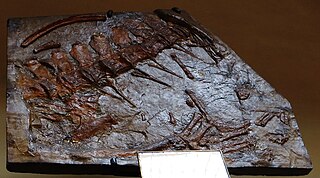
Neustosaurus is a genus of marine crocodyliform from the Early Cretaceous. Neustosaurus was a carnivore that spent much, if not all, its life out at sea. No Neustosaurus eggs or nest have been discovered, so little is known of the reptile's lifecycle, unlike other large marine reptiles of the Mesozoic, such as plesiosaurs or ichthyosaurs which are known to give birth to live young out at sea. Where Neustosaurus mated, whether on land or at sea, is currently unknown. The name Neustosaurus means "Swimming lizard", and is derived from the Greek Neustos- ("swimming") and σαῦρος -sauros ("lizard").

Bielzia coerulans, commonly known as the Carpathian blue slug or simply the blue slug, is a species of very large land slug, a terrestrial pulmonate gastropod in the family Limacidae, the keelback slugs.
Jean-Jacques Kieffer was a French naturalist and entomologist who specialised in the study of parasitic insects. Educated as a priest, Kieffer taught natural science in Bitche, Lorraine while working on the description and classification of insects. His work and publications later became a predominant source of description and classification for entomologists in the early 20th century, in particular with regard to parasitoid wasps, midges, and mosquitos.

Limacidae, also known by their common name the keelback slugs, are a taxonomic family of medium-sized to very large, air-breathing land slugs, terrestrial pulmonate gastropod molluscs in the superfamily Limacoidea.
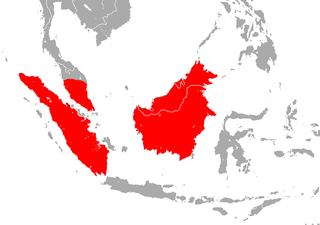
The Borneo roundleaf bat or Bornean leaf-nosed bat is a species of bat in the family Hipposideridae. It is found in Borneo, Sumatra and Peninsular Malaysia. Hipposideros sabanus is a synonym of this species.

Cheliderpeton is an extinct genus of temnospondyl amphibian. It lived during the Early Permian in what is now Europe and Germany. Fossils have been found from the Ruprechtice horizon of the Intrasudetic Basin of Bohemia in the Czech Republic, as well as the Saar-Nahe Basin of southwestern Germany. Cheliderpeton had a 16 cm skull, and reached about 65 cm in length.
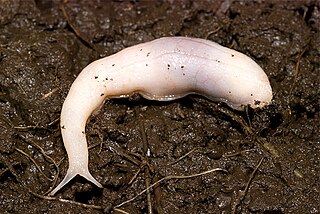
Trigonochlamydidae is a family of air-breathing land slugs, terrestrial gastropod molluscs in the clade Eupulmonata.
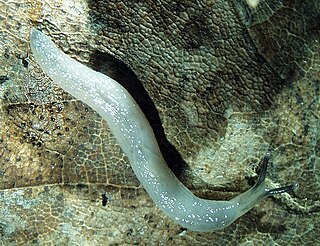
Boettgerilla is a genus of air-breathing land slugs, terrestrial pulmonate gastropod mollusks in the family Boettgerillidae.

Klikia is a genus of fossil air-breathing land snails, a terrestrial pulmonate gastropod molluscs in the family Elonidae.
Njalila is an informal name for a genus of gorgonopsian therapsids from the Late Permian of southern Africa. Fossils have been found from Malawi, Zambia, and Tanzania.

Limacinae are a taxonomic subfamily of air-breathing land slugs, terrestrial pulmonate gastropod molluscs in the family Limacidae.
















